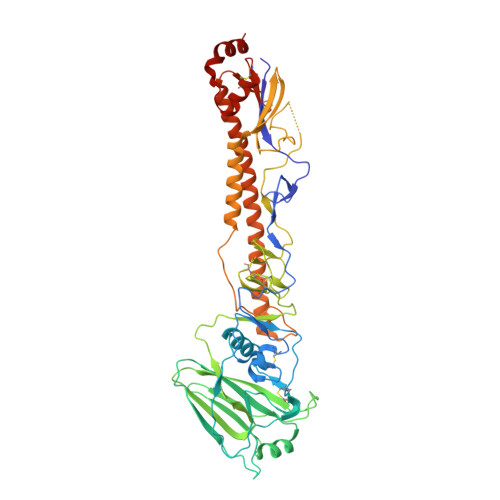Avian-to-Human Receptor-Binding Adaptation by Influenza A Virus Hemagglutinin H4
Song, H., Qi, J., Xiao, H., Bi, Y., Zhang, W., Xu, Y., Wang, F., Shi, Y., Gao, G.F.(2017) Cell Rep 20: 1201-1214
- PubMed: 28768203
- DOI: https://doi.org/10.1016/j.celrep.2017.07.028
- Primary Citation of Related Structures:
5XL1, 5XL2, 5XL3, 5XL4, 5XL5, 5XL6, 5XL7, 5XL8, 5XL9, 5XLA, 5XLB, 5XLC, 5XLD - PubMed Abstract:
Low-pathogenicity avian influenza viruses (LPAIVs) have caused a global concern to public health since the first novel LPAIV H7N9 outbreak occurred. The receptor-binding properties of the viral hemagglutinin are one key factor for efficient transmission and infection in humans. Recent evidence shows that H4 subtype viruses have been widely circulating in domestic poultry and human asymptomatic infections might have occurred. Here, we evaluated the receptor-binding properties of two representative isolates, avian H4N6 (containing Q226 and G228) and swine H4N6 (containing L226 and S228), and found that the avian isolate preferentially binds to avian receptors, whereas the swine isolate preferentially binds to human receptors. The Q226L and G228S substitutions are pivotal for the receptor-binding switch, which resulted in similar human receptor-binding features to the pandemic H2 and H3, implying that H4 has the potential to cause human infections. This early-warning study calls for future extensive surveillance.
Organizational Affiliation:
Research Network of Immunity and Health (RNIH), Beijing Institutes of Life Science, Chinese Academy of Sciences, Beijing 100101, China; CAS Key Laboratory of Pathogenic Microbiology and Immunology, Institute of Microbiology, Chinese Academy of Sciences, Beijing 100101, China.















